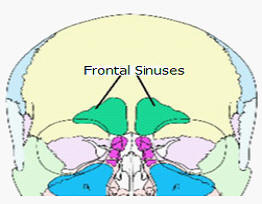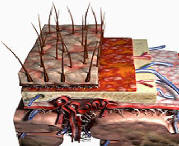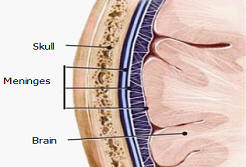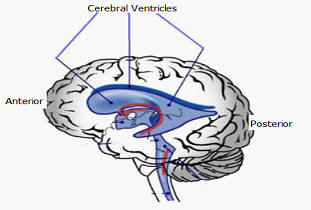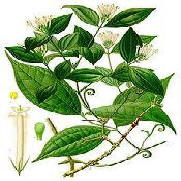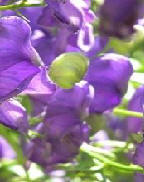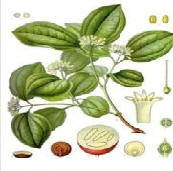|
The Injury of Imam Ali*, and His Death A Study in Neurosurgical and Medico Legal aspects Prof. Abdul Hadi Al Khalili, MBChB, FRCSE, FACS, MPhil ** Washington, DC
Key words: Imam Ali, Abdul Bahaman Bin Muljim, head injury, neurosurgery, poisoning, history of important people, forensic medicine
Introduction: At a Baghdadi Cultural forum, The White Palace, I was invited to deliver a speech in 1996, entitled “Society and Brain Surgery”. The talk included two main topics: the brain as a cause or a victim! Among the subjects discussed were: headaches, epilepsy, and head injuries. Some stress was put on a number of historical personalities who died as a result of head trauma changing the course of history. Also whether it would have been possible to save their lives, , had treatment been available to their surgeons at the time. The most important examples quoted was that of Imam Ali Bin Abi Talib, Ivan the terrible of Russia and King Ghazi of Iraq. When I paused at the matter of the head injury of Imam Ali who was struck on his head by a poisoned sword of Abdul Rahman bin Muljam, and upon the details of the events that led his martyrdom, I found reason to reflect and investigate the true cause of death from the perspective of brain surgery, considering my modest expertise in that specialty. It was possible to apply available knowledge to the ramifications of such head trauma, since the injury he endured was accompanied by poisoning, further complicating the condition. In this I am building on the tradition of studies of men whose death changed the course of history include such Holy figures as the Prophet Moses, the Prophet Jesus, peace be upon them; reformers such as Confucius and Buddha; scholars such as Isaac Newton and Albert Einstein; politicians such as Lenin and Kennedy, musicians such as Beethoven and Mozart, among others. (References in English 1-10) This study of the death of Imam Ali builds upon the work of historical pioneers who quoted eye witnesses present with the Imam from the moment of his wounding until his death two days later. (6, 8, 22, 27, 31, 36, 39) This study is an effort to apply hands-on medical knowledge to an important event; other researchers may need to continue the study this event. Summary of the History of the Injury: On the morning of the 19th of Ramadan in the Hijra year 40 H (661 AD), Imam Ali Bin Abi Talib was wounded by the poisoned sword of Abdul Rahman bin Muljam al-Moradi. Two days later, the Imam passed away (1- 50). The first study from the perspective of brain surgery and forensic science, there appeared what might be called the depth of these two fields to discover some medical details and an effort to understand the direct cause of death. Discussion of Condition: The discussion was divided into three parts, with the first part being the head injury itself; the second part focuses on the poison; and the third part deals with other possible causes of death. FIRST: THE HEAD INJURY: If we attempt to examine the forensic science details and the brain surgery details we will be confronted with several questions: - What was the position of Abdul Rahman Muljam when he was struck? - What was the position of the head when it was struck? - What the Imam (PUH) struck when walking or when he was bowing in prayer or when he raised his head after bowing or when he sat up? - The condition of consciousness - Uthair Al Sakooni, the doctor - Was the Imam wearing a turban? - The Wound - The side of the injury - Where was the wound in the head? - What were the surgical details of the injury? - What were the details of the nervous system after the injury? Where was Abdul Rahman Muljam at the time of the strike? Many historians agree that Abdul Rahman Muljam and his partner Shabib Bin Bajra (1, 2, 3) were waiting for the Imam, who was on his way to the mosque for morning prayer, and they attacked him. Bin Bajra missed, but Abdul Rahman struck the Imam’s head. (3, 25, 30, 31, 32, 33) Still other historians documented that the Imam was kneeling, and he bowed in prayer. He then sat up, and as he attempted to bow again, Abdul Rahman Muljam struck him. (34) Or the Imam was praying, and when he raised his head from his second prostration he was struck in the head by the wielded sword. (8, 24, 30, 31, 33, 34) What was the position fo Bin Muljam when he struck the Imam? All the storytellers agree that the wound was at the front of the head, or the upper side of the head. (1,2,5,6,7,12,13,17,21,24,26,29,30,35,36,37) It was also said that the strike was on the forehead, (38) to one side. (18). And there were those who said he was struck on his bald spot. (31, 39) Many historians confirm that this head wound of Imam Ali was at the same place (scar) of his previous wound inflicted on him by Amrou Bin Wad Al Amiri when he struck Imam by sword in the Battlefield of Khandaq some 35 years earlier. (31, 33, 34,) State of alertness: At the time of the injury: When the Imam was struck, he did not lose consciousness but said: “I won by the Lord of Kaaba.” (17, 19, 29) Immediately after: He then said, “Don’t let the man escape.” (2, 3, 4, 6, 27, 36) Or “You must go after him.” (9,13,15,16,17,20,22,23,24,31,36,39,41) . Or “Jail the man.” At the residence: He was then carried to his home. Visitors came to him and he praised God (16): The Imam said: Get me the man. (9,10,13,15,16,17,20,22,23,24,30,31,36,39,41) During the period of his injury: Jundub Bin Abdullah entered to keep him company, who said, if we lost we concluded.
[What does this mean?] What you were ordered and did not end with you, you saw, he then called upon Hassan and Hussein and said to them I bequeath you. (4, 8, 13, 14, 41)
When death approached he called for paper and ink, and he wrote his will, (2, 10, 23, 24, 34, 40) stating: “In the name of God the merciful and compassionate, this is what I will…” (17, 41) After he completed his will, he said: “Peace and God’s blessings upon you.” After which he only uttered the words “There is no God but God”. (38) That was what he spoke last after he told Hassan what he wished, he repeated: “There is no God but God,” until he died. (26, 43) It is said that the last words he spoke were: “He who does an atom of good will see good, and he who does an atom of evil will see evil.” (26) Kulthum went to her father, and Ali said to her: “Close the door,” which she did. Hassan said: “As I was sitting at the door of the house, I heard the call of another person saying: “He who is thrown into hell.” Hassan said, “I will not be patient and wait for the door to open as I entered my father passed away.” (34) Uthair Al Sakooni, the physician: Historians say physicians from Kufa gathered and went to the Imam. (There were at that time about 150 physicians.(1, 44) Not one was {what?] the injury Uthair Bin Amrou Bin Hani al-Sukuni. He was a doctor who mastered surgery 40 Christian boys who were taken by Khalid Bin Walid in Tamr. And when Uthair saw the wound of the Imam, he called for a hot sheep’s lung and removed from it a vessel (according to the researcher the vein must be a bronchiole and not the vessel commonly known as the vein or the artery). He then inserted it into the wound, blew into it and removed it. As he saw the brain white matter he said to him, “Oh Prince of Believers prepare your legacy to the final will for the enemy of God struck your.” He then called for a paper and ink and wrote his will. (2, 10, 23, 24, 43) (One of the historians said Sakooni came to treat the Imam the day of the injury. (10) Was the Imam wearing a turban? In those days Arabs generally wore turbans, especially during prayer.، (25, 45, 46), hence it is highly likely that the Imam was wearing a turban. Perhaps the sword struck an uncovered area of his head and not the turban itself. The Kufa physician Uthair Al Sakooni did not mention at the time of the examination that there is any remnant of the turban in the wound, which is what would happen had the injury been through a turban. The wound: The scalp injury bled heavily, and the Imam moved his head from side to side. (30) And the blood streamed to his beard. (26) And the blood loss made him pale in the face. (47, 48) And according to Amrou Bin al-Hamaq: “I entered the room of Ali, where he was struck in Kufa, and I said: ‘your injury is not that bad, it’s just a scratch.’ Imam replied “I am leaving you (die).” (42, 43) The side of the injury: Historians mention that Bin Muljam was left-handed. So as his sword was in his left hand, he confronted the Imam during the strike. And because he was so fearful he did not wish to make a mistake in hitting the Imam, and because of his followers, so he hit from where he was able to strike the head of the Imam as fast as he could in order to escape. Naturally the strongest path for the sword was the vertical one on the body with the extension of the line of action of the right arm of Bin Muljam the strike was probably at the left of the front side of the head. The location of the injury: The wound did not extend to the right side but was parallel with it. Had the injury been leaning, or had it crossed the midline, it would have led to intracranial bleeding shown in red discoloration of the white matter which was not reported by Al Sakooni. With the passing of time and because of the possible cut of the superior sagittal sinus causing rapid and massive collection of blood inside the head causing pressure on the brain the effect of which normally shown as rapid deterioration of level of consciousness and progressive weakness of the limbs resulting in complete loss of consciousness ending in death.
Figure 1: the superior sagittal sinus
Did the strike come at the lower side or directly above the brow? If that were the case, it would have injured the frontal sinus cavities that fall at the level of the eyebrows at the skull base. And here most often occurs some nasal bleeding from the sinuses that links the nose to the base of the skull. See image 2. And that was not mentioned in the events described that stated the bleeding came from the scalp and nosebleeds were not mentioned at all. Likewise the injury at the brow may generally result in local subgaleal bleeding and ecchymosis and periorbital hematoma, which was never referred to by historians.
Figure 2: Frontal sinus Did the injury occur at the top of the head? Has the sword struck and at the depth of the wound as described by Sakooni’s report, the motor strip of the cerebral cortex (see image 3) that controls the opposite side of the body resulting in complete or partial paralysis. According to the narrative of the historians, there was no mention of weakness of limbs at the time of his death.
Figure 3: the motor strip of the cerebral cortex Was there extensive bleeding? There is not a clear idea about the intensity of bleeding from the wound at injury. It is, however, known that the scalp is generously supplied with blood vessels. (See image 4) One can therefore assume that there was significant blood loss which can cause circulatory failure and death.
Figure 4: the scalp The Skull Injury It is certain that the injury entered the cavity of the skull and reached the brain matter. And the person who supports this is Sakooni the physician when he inserted a vessel (wind pipe) from a sheep’s lung into the head wound and exposed the whiteness of the brain at the root he said: “Oh Prince of Believers, prepare your legacy to the final will.” (24) Was the fracture of the skull large? There is no doubt that the skull fracture exposed the white matter of the brain. But the fracture was not large, and as Sakooni was not able to see the inside of the skull and how he was forced to insert the lung bronchiole to the wound to explore the skull cavity and notice the white matter? Had the fracture been large, he would have been able to see directly inside the brain . The fracture was the size of the width of the blade of the sword only. Were the meninges torn? Since we know the sword penetrated the brain matter, which indicates that the injury led to the tearing of the meninges which encase the brain from all sides. See image 5. But the tearing of the membrane did not cause hemorrhage around the membranes as happens sometimes with such injuries; the evidence is the absence of discoloration of the white matter of the brain by the blood, which can’t flow easily from the extradural to the intradural spaces.
Figure 5: the the meninges and related structures The brain wound: The injury penetrated the brain but not deeply. See image 6. And when the hemorrhage reached there, it resulted in the deterioration of the level of consciousness and an intense headache which historians do not mention. Hence we can assume that the depth of the wound within the brain matter did not exceed an inch or a little more.
Figure 6: the cerebral ventricles What supports the conclusion that the brain injury did not exceed an inch by much is the absence of the occurrence of intracerebral bleed or not reaching the brain blood vessels that are present at that depth but near the ventricles. And if there was tearing in the brain vessels, it would have produced an intracerebral bleed with deterioration hour after hour resulting in paralysis and deterioration in alertness and then loss of consciousness followed by death. It is important to note the Imam was fully alert after the injury and that he was conscious until his death. He was completely aware but for episodes of fainting spells so much so that he was able to issue his will and talk with his family and visitors in a manner not unlike his usual style when he gave speeches in the prime of his health, both in style and format. CONCLUSIONS on head injury: First conclusion: The strike was face to face, and the wound was vertical and parallel to the midline left side on top of the forehead. The length of the wound was about two inches, and the depth of the wound was about one inch. The Imam was, at the time of the attack, walking upright. It is not possible that the Imam was seated or bowing in prayer at the time of the attack because such an attack would have resulted in an injury either to the top of the head or to the back of the head not on the front. Second conclusion: Was the head injury the cause of death? The Imam was struck by a sharp sword that penetrated an inch inside the skull and brain matter. From what we have learned, it is unlikely that there was meningitis or encephalitis or brain abscess because of the lack of expected complications such as fever, headache, deterioration or loss of consciousness on the cusp of death. In the case of meningitis or cerebritis, the injured patient loses consciousness just before death. The Imam, however, remained conscious until the final moment his spirit left his body. It is also known that death from CNS infection occurs several days or weeks later, depending on the toxicity of the germs that seep into the wound from the inflamed and infected skin around the injury. However, in the case of the Imam, the injury was not infected. One of those attending the Imam said the injury was not significant. Also, there was no wound contamination of the cloth of the turban, which could have caused chemical inflammation of the brain or cerebritis.
Final conclusion: The head injury was not the direct cause of death It is worth mentioning that there is an observation not easily explained. The sudden strike to the head by the sword did not cause loss of consciousness for the Imam. Such loss of consciousness usually occurs in the case of intense brain injury, whatever the cause, whether from a fall, or from a direct strike to the head. The Imam said, after the direct hit, “I am surprised, and the creator of the Kaaba. And don’t let the man get away.” SECOND: POISON AS A CAUSE OF DEATH It is certain that Ibn Al Muljam had poisoned his sword. He said: “I poisoned it with a
thousand (that) (6, 11, 30, 49) I bought my sword for a thousand, and I poisoned it with a thousand.” (4, 8, 13, 15, 16, 17, 23, 24, 26) In other sayings, “Beware of the sword
for it is poisoned.” (29) And, “the poisoned sword.” (22) And, “He impregnated his sword with poison”. (14, 19) And at the Kaaba… they took their swords and poisoned them. (8,
4) Methods used in poisoning the swords: The ways of using the poison, and several have been mentioned, include plating the sword directly with poison. There also is poisoning the sword when manufacturing the weapon, in which long grooves are engraved and plated by the poison. The sword then dries with a greater amount of poison than it would have with just external plating. There is also the method of placing the poison inside the sheath so that the poison seeps into the sword with maximum effect. It is not possible to know which method Ibn Muljam used on his sword, we only know that he poisoned it with a thousand. A reference to the impact of the poison on him: There is no clear indication of the impact of the poison on the Imam’s health condition after he was stricken with the poisoned sword. We know only what Bihar Al Anwar by Al Majlisi mentioned: “He lifted a thigh and placed another from the intensity of the poison (50). Also in Al Bid’a wal Tareekh, which stated that the injury did not cause death, it was poison that had its effect. (31) The kinds of poisons and their impact: Deadly toxins may enter the body through the mouth, by inhalation, or by blood or skin. In the case of the Imam, it is likely that the poison entered through the poison-impregnated sword of Ibn Muljam. Here we will look into the common poisons during that era and the impact on the body and how they resulted in death. In the majority of cases, the poisons that were used in the old days and the ones that they coated their weapons with were of three kinds: plant poison, animal poison, and mineral poison. (See list of foreign sources (11-14) A. plant poisons: 1. Digitalis plant, which affects the heart directly, it is used to treat heart failure but in minute amounts.
Image 7: Digitalis plant 2. Curare plant, which acts on the nerve endings, resulting in paralysis in the muscles of the body. Native American Indians used this to coat their arrows. It is the basis for anesthesia in our modern era, in small quantities. (Image 8)
Figure 8: Curare plant 3. The aconite plant that affects the nervous system and the heart. (Image 9)
Figure 9: Aconite plant 4. The strychnine plant that affects the spinal cord directly.
Figure 10: Strychnine plant B. Animal poisons: The poisons taken from animals include snakes and scorpions and others. C. Mineral poisons: The mineral poisons include arsenic and cyanide
The discussion: The symptoms of the first method of poisoning, or poisoning by digitalis: the impact includes loss of consciousness because of irregular heartbeat and sudden death. This does not apply to the case of the Imam who remained alert until the last minute. As for poisoning by Curare, the impact includes escalating paralysis of the muscles of the limbs and of the neck and then the head and ultimately the paralysis of swallowing and speech and then the respiratory muscles and then death. The symptoms do not include loss of consciousness in the beginning. This also does not apply to the Imam whose movements were constant and his speech was audible until the end. Aconite’s impact begins on the tongue, which becomes heavy and perhaps paralyzed. The limbs become pale and cold with sweat. The movement resembles epileptic attacks. Death occurs with the slowing of breathing and cardiac arrest preceded by a loss of consciousness and that does not apply as well. Exposure to strychnine results in events of convulsions and spasms in all the body and the feeling of strangulation. The body then develops severe contraction and pulls the head backwards. This is repeated intensely until death. Poisoning by scorpion results in intense pain at the site of the entry of the poison, followed by fever, and difficulty swallowing and increase in saliva secretion. This is followed by muscle cramps and seizures resembling epilepsy, stopping in breathing, and then death. Poison by snake depends on the kind of snake, but in most cases the patient feels increasing intense weakness. He then feels sleepy and increasingly weak and eventually paralyzed limbs. This is followed by bleeding under the skin or the gum, nose, urine, or per rectal. Speech becomes difficult as does swallowing and breathing. This is all preceded by loss of consciousness. Cyanide causes difficulty breathing, seizures similar to epilepsy, loss of consciousness, and death Arsenic poisoning leads to headache and disorder in alertness. It also causes vomiting and diarrhea. The victim also acquired an odd smell resembling garlic, accompanied by intense pain in the stomach, and painful muscle cramps. The patient then suffers epileptic seizures, loss of consciousness and death. In some cases of poisoning, the cause of death may be accompanied by deterioration of liver function and liver failure. The symptoms include intense yellow discoloration of the skin or jaundice. However, the yellowing of the Imam was mentioned immediately after the injury when the head of the Imam was placed in the lap of his son Hassan. The Imam’s face grew paler as a result of declining blood pressure. It is also mentioned that when Asbagh Bin Nabata entered the room of the Imam, he did not know which was more intensely yellow, the Imam or his yellow turban. (50) The yellowing of the eyeballs, which is a sure sign of jaundice, was not mentioned at all. The yellowing of the skin, because of a weakened liver, is another sign of jaundice. The yellowing here is either caused by jaundice, or as a result of blood loss. Jaundice at this speed occurs in acute liver failure as a result of some cases of poisoning. But the yellowing of the face of the Imam was caused by loss of blood and falling blood pressure and not by jaundice. This description was not repeated by any of those attending the Imam, and also there was no medical sign of the deterioration of the liver at this speed. Intense liver deterioration, caused by poisoning, must be accompanied by loss of consciousness. Physical signs of this did not occur in the case of the Imam. CONCLUSION on the poison effect: The above-mentioned physiological and pathological changes do not apply to the case of the Imam from the moment of his injury until his death. Therefore the opinion is that it is not possible to accept that death occurred as a result of the poisons discussed. THIRD: OTHER POSSIBLE CAUSES OF DEATH There are two other possible causes of death First: Is bacterial poisoning of the blood, septicemia. This occurs when the wound is infected by highly virulent microorganisms, which move through the bloodstream to cause deadly blood toxemia. In this case the symptoms include dilation of blood vessels and the reddening of the skin, and especially the limbs. However such a case of bacterial poisoning is accompanied by fever and perspiration. Also infection is visible at the scalp wound, which is the source of the infection in the form of local wound inflammation or pus formation and inflammation of the brain and meningitis. None of this occurred based on what was mentioned above. Amrou Bin Al Hamaq Al Khuzai said when he looked at the wound of the Imam: “Oh, Prince of the Believers, your wound is nothing!” This indicates that the wound was free of local obvious skin changes and there was no mention of fever. Conclusion: The cause of death by bacterial poisoning is not a strong possibility. Second: Is the heart is the heart and circulatory failure caused by the loss of blood and dehydration due to the fact that it was Ramadan in the preceding days, and the likelihood that the Iman had not drunk enough liquids that same day. This caused the cardiac output to be reduced causing lowering of blood pressure. This weakens the heart gradually until it comes to a standstill. However, it was not reported that the blood of the Imam was streaming on the ground, for example, or that he was drowning in his blood, as is described in customary cases of heavy bleeding. We do know that blood colored his face, hair, and beard. If we add the blood loss to the preceding days of Ramadan fasting by the Imam would have needed liquids naturally. He did not have anything to eat but for two or three bites. He said: “But few nights and the command of God arrives and I face God hungry. (12, 32, 39) Ibn Al Ashaath said upon seeing the Imam: “I saw his eyes sunken in his head.” Al Ashaath said: “The eyes of a head injury and b the Lord of the Kaaba.” (4, 30) Sunken eyes are indicative of dehydration. However, this description was on the first day of the injury and therefore cannot be taken as proof of dehydration of the body to the degree that it could be the cause of death, noting that it is not necessary in such cases to lose consciousness before death. Conclusion: We can conclude that all these cases resulted in an increasing drop in blood pressure, weakening the heart intensely, but can we state that this is the cause of death? What is meant by cause of death? In most cases, there are two causes of death: direct and indirect. The direct causes include severe head injury, a car accident, or several gunshot wounds to the head or heart, or a stroke or myocardial infarction. As for indirect cause, for example the heart stops due to severe blood loss, so the direct cause is the loss of blood and the indirect cause would be heart stopping as a result of that. In the case of pulmonary embolism caused by thrombosis propagated from leg vessels, the direct cause would be respiratory failure, and the indirect would be the clot in the leg veins. Or respiratory failure would be the direct cause of death of a colon cancer patient when the illness spreads to the lungs, and the cancer would be the indirect cause of death. FINAL CONCLUSION: No doubt that the initial cause of death was the strike by sword, as he was in good health prior to that. What we can see is that the head wound was not the direct cause of death and the possibility remains that poison may have been the direct cause of death still holds true. If that was a poison then it must be different from those mentioned in the study. The real cause of death remains in need for further study, hoping to get more sources of information in the future. I conclude my paper with a quote from Avicenna that was always repeated by my teacher, the late Hussain Ali Mahfoudh: “We beg God to keep us from aversions that make us stumble upon dispositions with the wrong beliefs, and arouse admiration of what we see and do, and praise Him who grants the mind”. …………………………………………… Acknowledgement: The author recognizes the help of Ms. Yasmin Bahrani for her help in editing this English version.
REFERRANCES: Arabic Literature References:
English Literature Reference:
|

